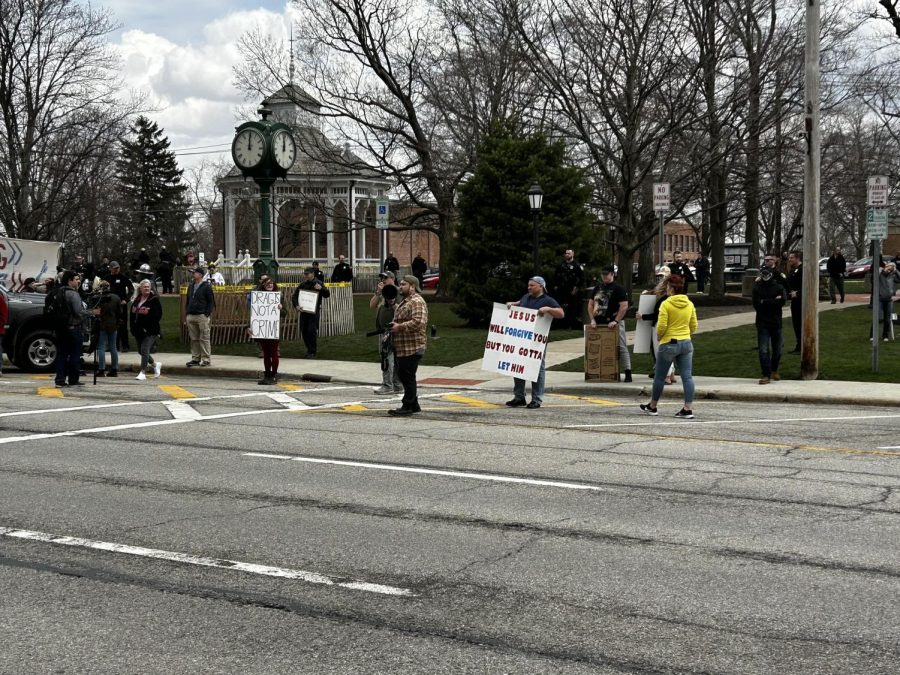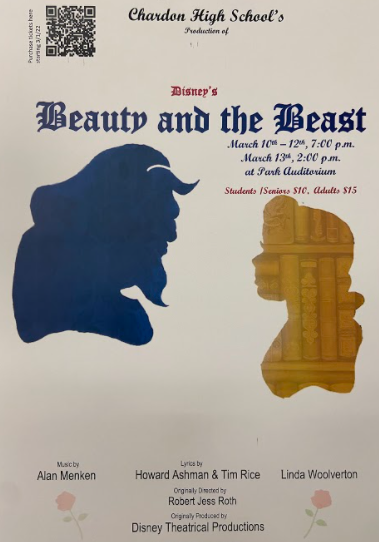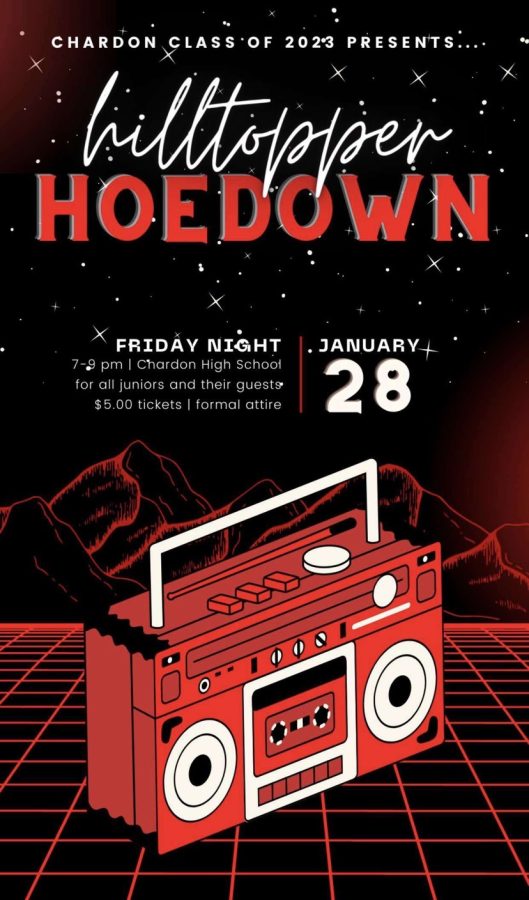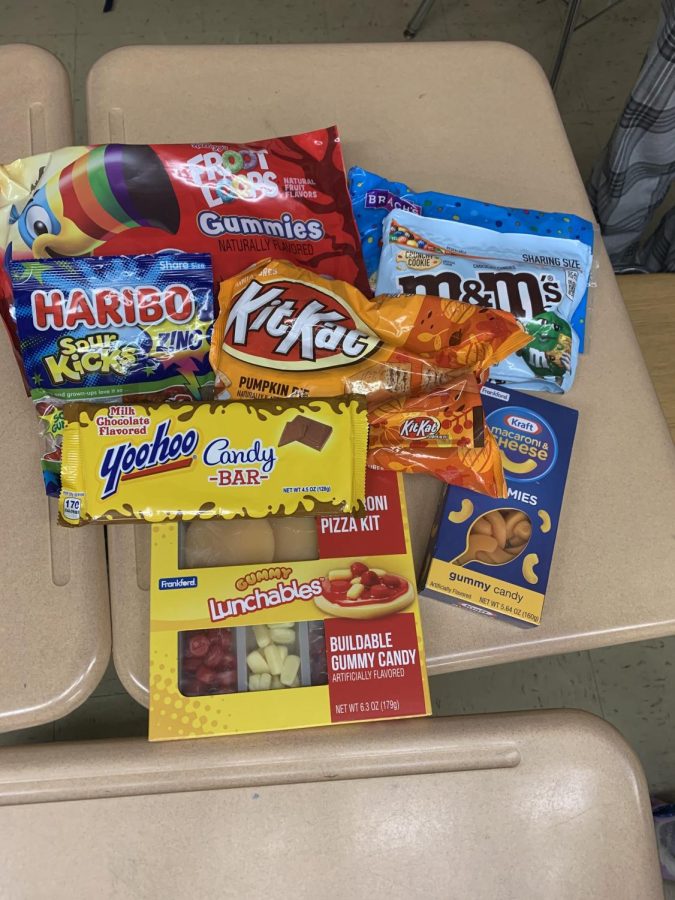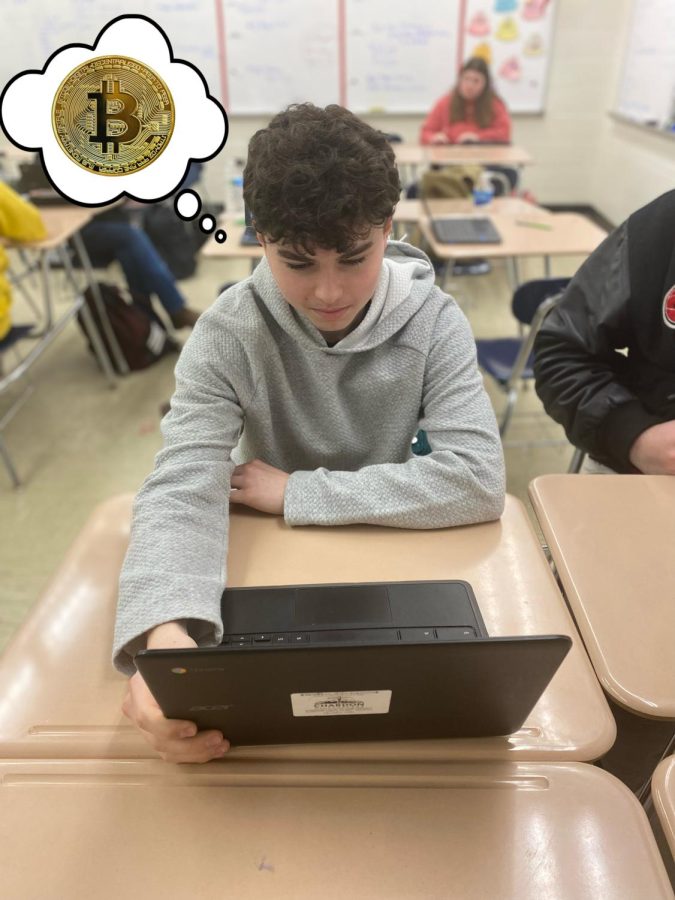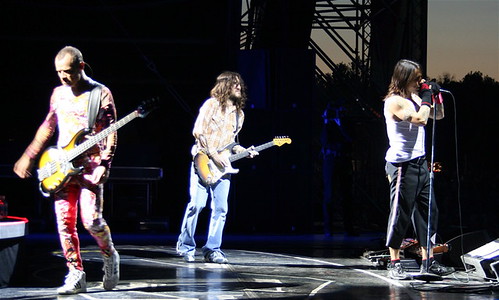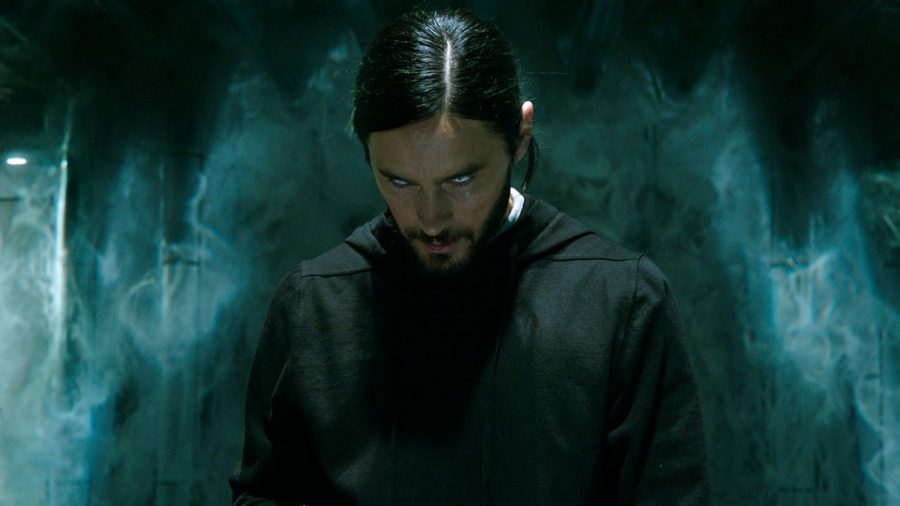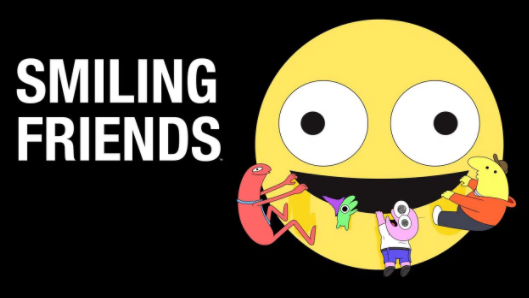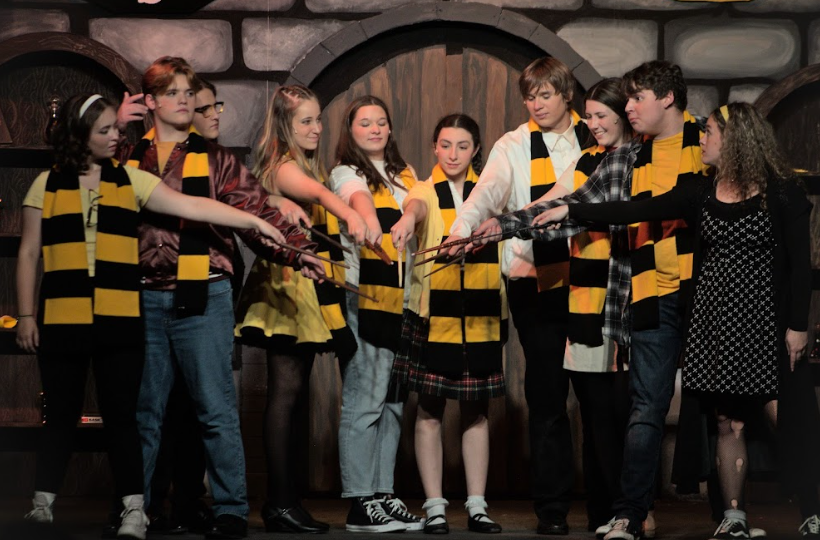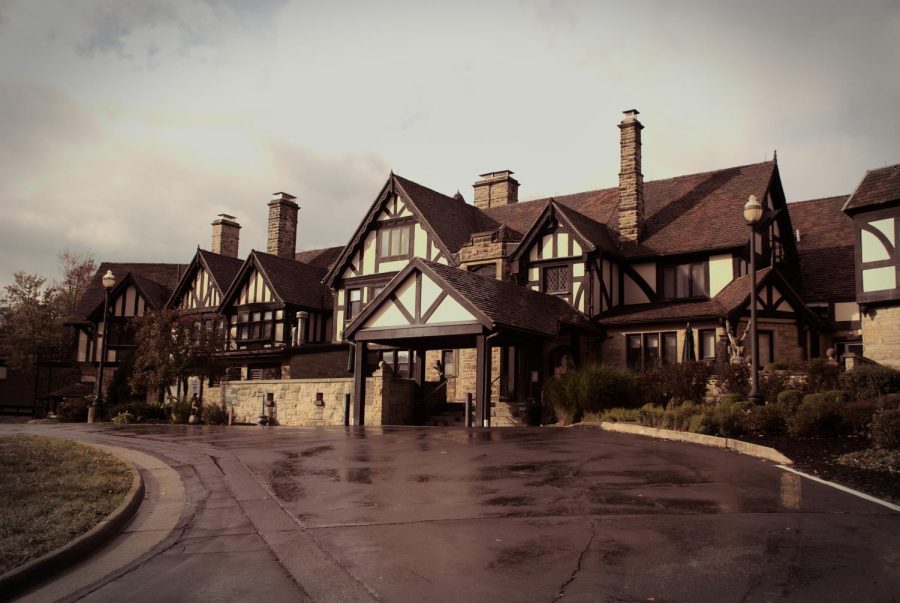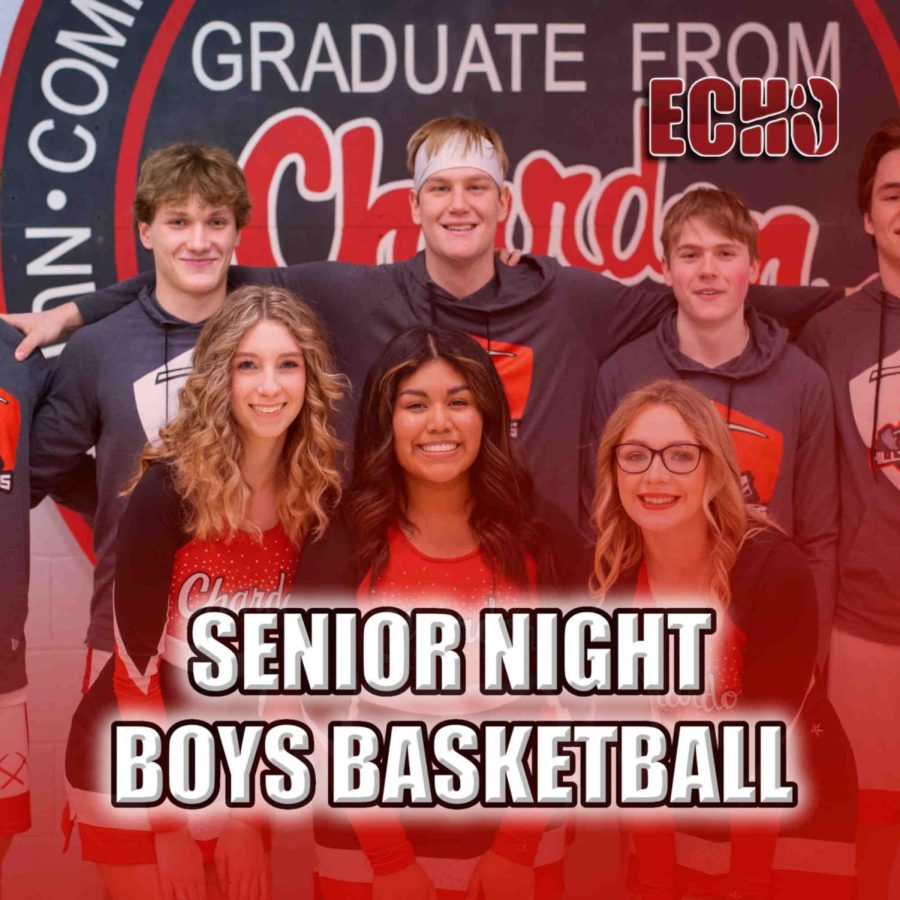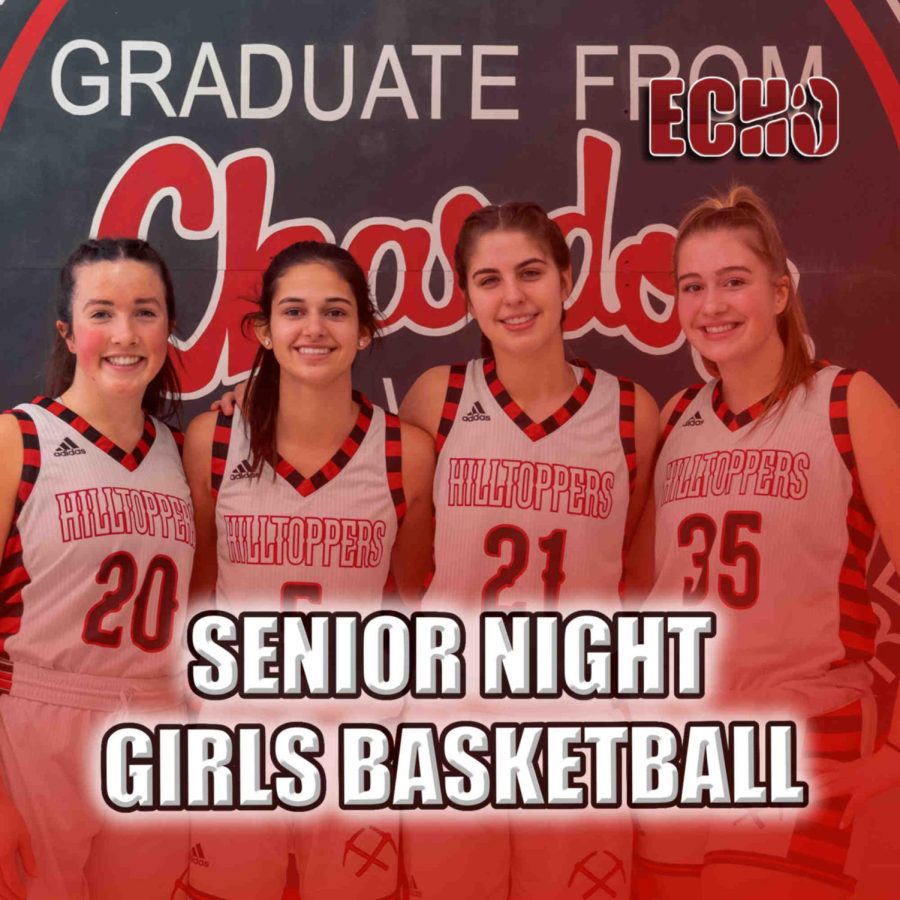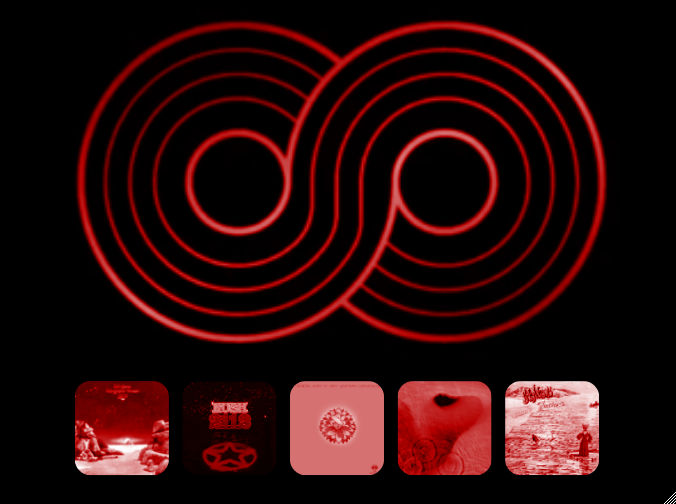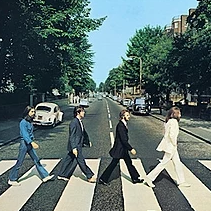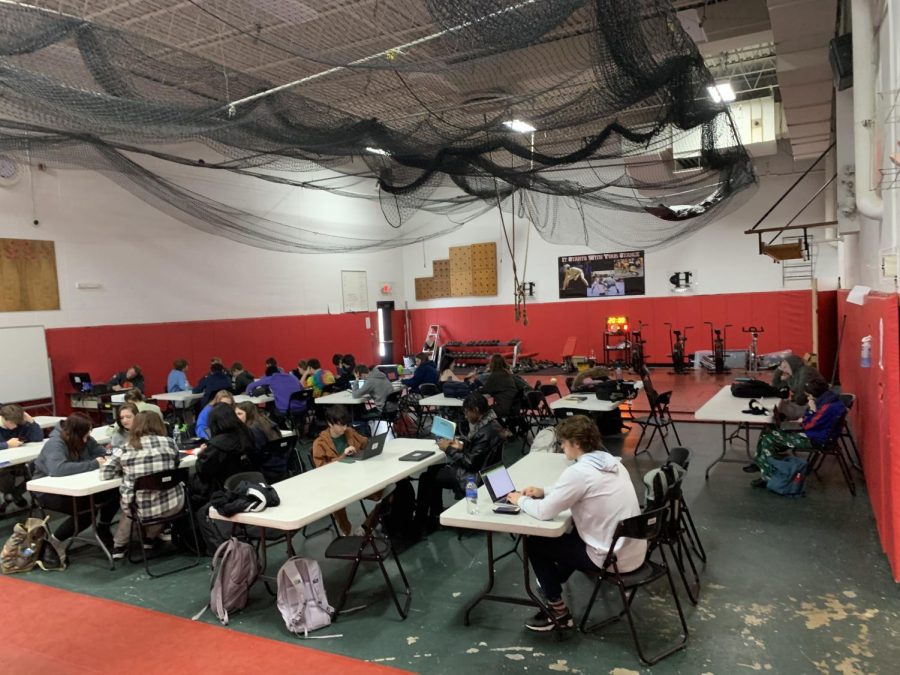Best of Really Long Songs: Ian Quinn’s Infinite Playlist
February 24, 2022
A long, long time ago, long before you zoomers were even conceived, there was only one way for you to listen to the music you wanted; records.
Another name for them are LPs, but you probably know them as those quirky big DVD things that are really cool for aesthetics but don’t serve any other purpose. They used to be much more important though, and with great power, comes great tomfoolery.
Imagine yourself driving into a picturesque sunset in the domain of a stylish convertible on the coasts of somewhere nice. You, in your own small world, living it up the only way you know how. How about a song to enhance this enriching experience. Whip out the phone, hook up the aux, and throw on that trusty apple music playlist that knows what you like more than your parents do, because you’re just that good.
A track you’ve never heard of starts playing, its definitely an old one. It begins pretty similar to anything you’d know, but doesn’t build as quickly as you expect. Two minutes in, and the song still hasn’t hit its stride yet. Some songs are already over at this point. But no matter, it’s exciting to hear avant garde works like this.
Five minutes in, and now we’re somewhere, but there’s no indication we’re stopping anytime soon. Eight minutes in, there have been ups and downs, the notes and beats jumping themes and evoking emotion in a way you haven’t gotten from a song before.
But it’s gotta be over soon. Right?
Eleven minutes in, and this is insanity. Who would write an eleven minute song. You open your phone to see how much is left, your eyes fall on the scroll bar, and your jaw drops. The fabric of space and time is ripped by your confusion, met by sheer surprise, and almost disgust.
You’re only about halfway through.
All records, save for the singles, were just about the same size, and could fit just under 24 minutes worth of music on each side. While this laid the foundations for modern album composition as we know it, some artists took a different approach, and that’s why we’re here.
This article will focus on all the songs that take up either most of or all of an entire side of an LP. That means between 18 and 24 minutes in one song. These *pause for dramatic effect* are really long songs.
Honorable Mention: The Long One, Abbey Road Medley
There’s a few good reasons why this is only an honorable mention, the first being that it isn’t one song. It’s actually eight. Second, it’s only a total of around 16 minutes, not 18. And third, which also ties in with number two, it doesn’t cover a whole side.
No matter though, since this collection on the back half of one of the most famous albums of all time is probably the most famous example of a group of songs feeding into each other to create one unit; often deemed “the back half of Abbey Road.”
It is a timeless piece of music, featuring some of the most iconic instrumental, vocal, and lyrical parts of all time. Even if you don’t listen to The Beatles, you have heard something from The Long One. But because it just doesn’t fit the criteria, it doesn’t make this list.
5: “Vuh,” Popol Vuh (19:52)
For the first entry on this list, we dig into the international rock scene. In the Gardens of the Pharaoh (In den Garten Pharaos in its native language) was a 1971 counter culture experimental album by Popol Vuh, a German traditional/progressive band.
Popol Vuh spanned a vast number of genres from 1970 to 2000, and in 71 it was really difficult to tell what they were. Apple music attempts to settle it as electronic, but they’re really clutching at straws there.
Vuh, as with pretty much the whole album, is indescribable. There are no spoken lyrics, a very broad use of meter and timing, and instrumental sounds leading you to ponder where they came from or what they came out of. It is music without traditional values that defy categorization. Me asking you to make sense of it is like me asking you to explain a new color.
It is Alien. In fact, the best way to visualize this is to imagine if we made first contact with an alien race, similar to ours, making music with similar instruments, this would be a song they could thrust upon us.
But, that’s the thing; it’s still music. Instruments can still be identified, and the way they’re used definitely works from an audible standpoint. The song begins with an organ and cymbals. playing a foreboding dirge as the footing with swells of the crash almost raining overtop. But this isn’t a soft rain; more a rainstorm as it builds and diminishes. At the five minute mark, a flute-like instrument discreetly plays overtop the system, and at seven, the cymbals come back displaying a collage of sound, heavy on the echo.
At nine, the flute comes back in for a short cameo before leaving again. At eleven, the toms enter and lurk in the background playing a tribal-like beat, before leaving at fifteen. At this point, just the organ remains, playing its consistent chord progressions. In the next five minutes, the cymbals and flute make a few more cameos, but the organ remains and fades out at twenty.
This whole album challenges how we perceive music. It challenges how we classify what counts as music. Some may not even count it as music, but a collection of sounds with nothing to tie them together. But it transports me, makes me think, and paints a picture of a foreign time and place. It is a catalyst for the mind, and in my book, that makes it even more than music.
4: “The Revealing Science of God,” Yes (20:26)
Yes is the master of the long song. Their earlier catalog is a wash with tracks that are at least ten minutes long. This record, Tales from Topographic Oceans, is a particular goldmine for the like. Four tracks, four sides; it’s a Double LP where all four songs are between 18 and 21 minutes long. Insanity? Maybe. Experimental? Of course. Enjoyable? Yes, if you have a lot of patience.
The best track of these four is the first, and just like its parent record, it begins in a peculiar manner. “Dawn of light lying between a silence and solid sources, chased amid fusions of wonder.” Weird, right?
This whole album was written by Jon Anderson, the band’s leader, to channel his new interest in the four shastras. You may ask, “what are the four shastras?” They are the four main texts of the hindu religion that are made to outline every aspect of social and individual life.
Religion is a touchy subject for pretty much everybody, but it is the vassal for a pretty amazing product here, so I won’t judge.
Four bodies of lyrics depict the rise of humanity from the seas to today’s skyscrapers, all the while the instrumental builds underneath to match it. This erupts into a grand instrumental chorus, driven heavily by synths, bass, and Alan White’s technical drum fills.
This song, unlike Vuh, has many different movements; multiple sections where the entire feel of the song changes. Some do repeat, but when they do everything still feels connected. When the song briefly changes pace near the middle, it’s almost as if this shift tells as much of a story as the lyrics themselves do.
And at the end, when the final chorus rings in reprise of the beginning, who could think of a better way to cap off the swells and falls.
3: “Supper’s Ready,” Genesis (22:52)
Today, Genesis is near universally known for their 80’s art rock and pop hits. The band was a chart topper powerhouse when the Phil Collins era really came into its own with catchy, radio friendly tunes, like Land of Confusion and Invisible Touch.
But, Genesis wasn’t always like this.
Listeners from deeper within the classic and progressive rock circles usually opt for a different type of Genesis; the Peter Gabriel era (disclaimer: the early stages of the Collins era were just as good, but we won’t focus on that).
This is where Genesis’s 4th studio album, Foxtrot, sits, debuting in 1972 and beginning a transitional phase for the band. They weren’t in Kansas anymore, Toto, and this album was the tornado that brought them over the rainbow. Foxtrot was the album that established their sound as complex progressive art rock, thanks in no *small* part to Supper’s Ready. It is the back half of the record, and has a plethora of keys, time signatures, beats, themes, and motifs in its domain.
However, this brings a problem. When does it become too much variety? Where’s the line drawn between one big song and a bunch of small songs?
This one in particular has seven movements. But I can’t help but get the feeling that in a timeline not too different from ours, these would be seven different songs. Yes they sound great, and they tie in together, but it is hard to call it one unit.
Either way, this doesn’t detract from the potency of the song. The slow reprise of the beginning hits just as hard as it should, and then some. The storybook lyrics and instrumental tones add depth to the song that no band can match. This won’t be the last song on this list to suffer from an “identity crisis”, but it’s still definitely one song, and a darn tootin one at that.
2: “2112,” Rush (20:33)
What can I say? One of the most famous songs from one of the most famous albums from one of the most famous progressive rock bands of all time.
2112, the title track of its parent album, came out in 1976, making it the “newest” song on this list. This detail is important though, because at that point in time, Rush was more or less in a spot of doldrums. After a relatively unsuccessful Fly By Night album, they had something to prove to their label and their fans. What they needed was something catchy, digestible, and radio friendly to get them back on track.
But this wasn’t gonna happen.
They opted for a theatrical concept album about a world where music has long since died, and chose their flagship track to clock in at over 20 minutes.
Lunacy.
2112 tells the story of Earth far in the future where individualism and creativity are outlawed with the population controlled by a group of tyrannical Priests. Of course, music was counted as a catalyst for use of the mind, so it too was banned. What transpired through the album was a revolution, where the enlightened public take back power.
Somehow, they made it work. 2112 thrust them back into the “limelight”, and has a large cult following to this day. Now one would ask how they could pull something like this off? The answer is; they’re Rush. They just sort of do the craziest things and make them seem not crazy at all.
In order to make this song easier to listen to, Rush did the same as many other bands on this list; they broke the song up into many movements. While this did help the song the commercial success it got and quite frankly deserved, it brings back that nagging problem that plagues Supper’s Ready, the identity crisis.
There are two times in this song where the music completely stops, and numerous occasions where the pace and feel completely change. This would usually be a transition from song to song, but here it just isn’t.
This is the reason 2112 isn’t at the top of the list. If the Genesis song was fragmented, the Rush song is utterly broken. Again, this doesn’t detract from how great the song is. Musically, it is arguably superior to all the songs on this list. It manages to be aggressive and ambient, metal and proggy, hard listening and easy listening at the same time. Geddy Lee screaming in the verses of the “Priests” section are hardcore, while the section where the guitar is found sounds comforting and inviting, perfectly matching the themes of the lyrics.
But even Rush didn’t keep the story straight on whether or not it is a whole song. Some record sleeves and online sources list all the movements as separate songs. So while it’s impressive, it just isn’t a song.
1: “Echoes,” Pink Floyd (23:36)
This song isn’t necessarily remarkable.
Compared to others on this list, it’s almost milquetoast. There’s no screaming lyrics like 2112, nor are there nearly as much left field chord progressions and time signatures as there are in Supper’s Ready. It isn’t deeply religious like the Yes song, and it doesn’t quite challenge your traditional perception of music like Vuh.
It’s just a song.
And yet, being “just a song” could just about be the best praise one could give to a really long one.
The album Meddle came out in 1971. Many classify this within the time period of the Pre-Dark Side Era. In ‘73, when Dark Side of the Moon was released, the band was transformed from quirky british eclectic psychedelia to one of the most popular bands on Earth. This leads people to believe that early Pink Floyd wasn’t very good.
Early Pink Floyd was and is amazing, and here’s a prime example.
I’m a sucker for a good concept album, but not often do I hear a concept song. This is precisely that, and the size helps it happen. When writing Echoes, Roger Waters took inspiration from the ancient poetic works of Muhammad Iqbal about the relationships between humans, using the metaphor of celestial bodies. Waters was captivated, but had enough of people misinterpreting labeling all his work as “space rock”, a result of the image Pink Floyd’s music portrayed in the psychedelic rock era.
So instead of using planets, he dove to the deepest, darkest depths of the ocean to explain where humans came from and offer insight as to why we’re all kind of the same. That’s the first verse.
The second and third verses, which are separated by a 15 minute instrumental section, describe this unity in a modern day setting. “Strangers passing in the street, by chance two separate glances meet, and I am you and what I see is me.” But with this, Waters poses the question, “Why are we so divided?”.
These themes would later be revisited in “Us and Them” and subsequent albums, like The Wall and Wish You Were Here. For now though, it sits pretty in the soundscape this tune generates.
The instrumental experimentation does nothing but compliment these complex themes. The song begins with a sonar-like pinging, evoking a feeling of seclusion before we are greeted with the comfort of song. The arrangement grows as we build to the lyrics, and when the lyrics get heavy, the music gets heavy too. The jam session is so choice, and the ambient section comes completely out of left field, with what can only be described as sounds that completely confuse and slightly terrify you. It puts you in a place that you don’t want to be, all in order to make the build back to the final verse feel that much more cathartic.
Most amazingly, it is the longest song on this list, and yet it is also the most unified song on this list.
The Floyd is a monolith in the world of concept records. Nobody can match the stretch from Dark Side to The Wall. Six years, four albums, 100 million copies sold, and they were all concept records. No other progressive band got even close to those numbers. Knowing this, it’s pretty easy to understand how they managed to make a long song not feel long at all.
Echoes is one of the only songs that almost needs it’s length to fit everything that makes it thematically and instrumentally amazing. It’s length is a blessing, not a burden, and sometimes you get so lost in the song you forget it’s even long at all. That is the highest praise I can give any song in this company.
These songs aren’t for everyone. To quote a personal hero of mine, Ferris Bueller, “Life moves pretty fast”, so who in their right minds would want to free up 22 minutes of their busy lives just to listen to a song.
But pay heed to the second half of that quote. “If you don’t stop and look around once in a while, you could miss it.” So I encourage you; when you’re listening to your favorite playlist, and see one of these come up, don’t press the skip button. Press the play button. See it as a sign to slow down, take a deep breath, and listen to a really long song.

